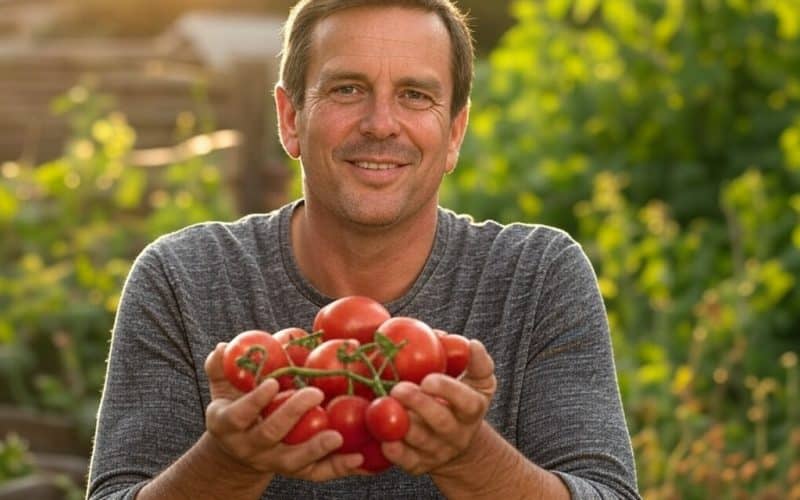
Agriculture faces the dual challenge of feeding a growing global population while mitigating environmental impacts. Comes in Heritable Agriculture, a recent spinout from Google’s X lab, which is integrating artificial intelligence (AI) into crop breeding to address these challenges.
The goal? To enhance crop yields, improve nutritional content, and bolster resilience against climate stressors. More than enough reason to check it out.
The Genesis of Heritable Agriculture – AI-Driven Crop Breeding
Incubated within Alphabet’s ‘moonshot’ factory, X, Heritable Agriculture emerged as an independent entity in early 2025. The company’s mission centers on making plants programmable through advanced AI and biotechnology. This approach seeks to deliver higher yields, enhanced nutrition, and greater resilience to environmental stresses.
The way they do it is via AI-driven crop breeding.
Traditional crop breeding is a time-intensive process involving the selection and crossing of plants with desirable traits, followed by years of field trials. Heritable Agriculture accelerates this process by employing AI to predict which genetic modifications will yield optimal results in specific environments. The company’s AI platform has been trained on data from approximately 14,000 plant samples across various crops and locations, enabling precise predictions of plant performance.
| Breeding Approach | Average Time to Develop New Variety | Key Characteristics |
|---|---|---|
| Traditional Breeding | 7–10 years | Relies on phenotypic selection and field trials |
| AI-Driven Breeding (Heritable) | ~1 year | Utilizes multi-omic data and predictive modeling |
Key Services Offered by Heritable Agriculture
Heritable Agriculture provides three primary services to its partners: identifying key genes, designing precise genome edits, and predicting plant performance in specific environments. This approach aims to accelerate breeding cycles, enhance crop yields, and improve resilience to environmental stresses.
More precisely:
- Gene Identification: Utilizing multi-omic data, the AI platform identifies causal genes associated with desirable traits with greater accuracy than traditional methods.
- Genome Editing Design: The platform designs specific edits to manipulate identified genes, facilitating targeted breeding strategies.
- Performance Prediction: By analyzing environmental and management factors, the AI predicts how modified plants will perform, aiding in the selection of optimal breeding paths.
To achieve this Heritable Agriculture collaborates with various stakeholders, this in order to apply its technology across different domains:
- Forestry: Partnering with ArborGen, the company aims to accelerate the development of superior loblolly pine trees. Initial research suggests that Heritable’s AI can halve the time required for tree improvement.
- Crop Improvement: The AI platform has been employed to breed crops with specific properties, such as tastier leafy greens and crops with controlled flowering times, demonstrating its versatility and effectiveness.
Environmental and Economic Implications
The adoption of AI in crop breeding isn’t just a technological leap – it’s a structural shift with direct consequences for resource use, climate resilience, and agricultural profitability.
Environmental Impact
AI allows breeders to model how plants interact with their environment long before a single seed is planted. Heritable Agriculture uses climate, soil, and genomic data to predict which genetic traits will thrive under specific conditions. The outcome: crops that survive heatwaves, require less irrigation, and resist local pests without synthetic chemicals.
For example:
- Water Use Efficiency: AI-selected variants of maize and wheat are being bred to maintain yield under 20–30% lower water availability.
- Reduced Input Dependency: Crops can be designed for low-nitrogen soils, cutting fertilizer use – a major source of emissions and groundwater pollution.
The result is a shift from reaction-based farming to predictive resilience, where sustainability is built into the seed.
Economic Gains
Traditional breeding takes 7–10 years to deliver a viable new crop variety. Heritable Agriculture’s AI models reduce this to as little as 12–18 months. That compresses time-to-market and slashes R&D costs.
Direct benefits include:
- Faster ROI for seed companies
- Lower seed costs for farmers due to reduced development overhead
- Increased crop yield stability, translating to higher and more predictable revenues
The ability to simulate field trials digitally also means breeders can iterate more, fail faster, and avoid costly large-scale experiments. For growers, this translates to seeds better tailored to their land – not a one-size-fits-all hybrid, but precision-engineered genetics for their microclimate.
In essence, Heritable’s platform doesn’t just create better crops. It rewrites the business model of agriculture.
Heritable Agriculture Will Face Resistance
The integration of AI into crop breeding is disruptive by design – and that disruption will meet resistance. Challenges won’t just come from outside the agricultural sector, but also from within, across technical, cultural, economic, and political domains.
Traditional breeders may be the first to push back. AI shifts breeding away from phenotype-based intuition toward machine-generated predictions. That undermines decades of field-based expertise. Many seasoned breeders are skeptical of AI models they can’t interpret. Undoubtedly an often heard criticism will be that “it’s hard to trust a black box.”
Farmers could also hesitate. The ag sector already struggles with tech fatigue, especially when new tools come wrapped in licensing fees or proprietary systems. AI-modified crops might feel like yet another external system demanding trust – without guarantees. Adoption could lag in regions where tech access is limited or where skepticism toward biotech is already high. The slow uptake of gene-edited soybeans in parts of South America offers a cautionary precedent.
Regulators present another hurdle. In the EU, gene-edited crops – even those without foreign DNA – are often still classified as GMOs. Legal frameworks haven’t caught up with the science. That means AI-bred plants might face import bans, restrictive labeling, or years of bureaucratic delay. Market access could stall before the first seed is even planted.
Public perception adds pressure. Pairing artificial intelligence with gene editing amplifies concerns about unnaturalness and corporate control. Heritable’s link to Google could – and will – intensify mistrust among activists and watchdog groups. Greenpeace, for example, has long opposed genetic modification and could easily extend that resistance to AI-designed plants.
Data ownership will also definitely spark tension. Heritable’s platform relies on massive datasets – genomic, agronomic, and environmental. But who owns the value extracted from that data? Farmers, universities, and seed banks may hesitate to share resources without clear legal protections. Similar issues have already disrupted precision agriculture, where data control remains contested.
Finally, biodiversity may suffer. AI will favor top-performing genotypes tailored for yield, resilience, or nutrient content. But this hyper-optimization risks narrowing the genetic base in fields worldwide. Without strict oversight, AI breeding could accelerate monoculture trends – leaving future crops more vulnerable to disease or climate shocks.
The debate has only started really, and Heritable Agriculture isn’t just building new tools – it’s clearly challenging the foundations of how crops are developed, evaluated, and sold. Whether the company thrives or struggles will depend on how it addresses these structural concerns with transparency, collaboration, and a willingness to adapt.
